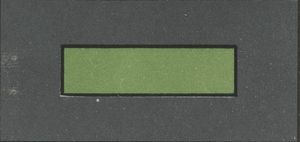
10th (irish) division.
At the end of August 1914, 10th (Irish) Division was authorised to be formed as one of the first 'New Army' (K1) Divisions.
On formation, the Division was organised as follows:
29th Brigade.
5th Bttn, Royal Irish Regiment
(became the Divisional Pioneer battalion in March 1915)
10th Bttn, Hampshre Regiment (from March 1915).
6th Bttn, Royal Irish Rifles.
5th Bttn, Connaught Rangers.
6th Bttn, Leinster Regiment.
30th Brigade.
6th Bttn. Royal Munster Fusiliers.
7th Bttn, Royal Munster Fusiliers.
6th Bttn, Royal Dublin Fusiliers.
7th Bttn, Royal Dublin Fusiliers.
31st Brigade.
5th Bttn, Royal Inniskilling Fusilliers.
6th Bttn, Royal Inniskilling Fusiliers.
5th Bttn, Royal Irish Fusiliers.
6th Bttn, Royal Irish Fusiliers.
The Division would campaign in the following locations:
Gallipoli: July 1915 to September 1915.
Salonika: October 1915 to August 1917.
Egypt/Palestine/TransJordan: August 1917 to April 1918.
Whilst on the Salonika front, during November 1916, the Division was augmented by three Regular Battalions, which joined from 82nd Brigade, 27th Division:
1st Bttn, Leinster Regiment joined 29th Brigade to replace 10th Bttn, Hampshire Regiment.
1st Bttn, Royal Irish Regiment joined 30th Brigade when 6th/7th Bttn, Royal Munster Fusiliers were amalgamated.
2nd Bttn, Royal Irish Fusiliers joined 31st Brigade when 5th/6th Bttn, Royal Irish Fusiliers were amalgamated.
From April 1918 onwards, there was a gradual "Indianisation" of the 10th (Irish) Division and, by the time it was completed, only the three Regular Irish battalions, who had transferred from 27th Division were included within the Division's ranks:
1st Bttn, Leinster Regiment - 29th Brigade.
1st Bttn, Royal Irish Regiment - 30th Brigade.
2nd Bttn, Royal Irish Fusiliers - 31st Brigade.
The original units having been re-deployed as follows:
29th Brigade.
10th Bttn, Hampshre Regiment transferred to 82nd Brigade, 27th Division in November 1916,
6th Bttn, Royal Irish Rifles was disbanded in May 1918.
5th Bttn, Connaught Rangers left the Division in April 1918 and transferred to 199th Brigade, 66th (2nd East Lancashire) Division in August 1918.
6th Bttn, Leinster Regiment left the Division in May 1918 and transferred to 66th (2nd East Lancashire) Division in July before being disbanded in September 1918.
30th Brigade.
6th Bttn. Royal Munster Fusiliers left the Division in April 1918. Its men were absorbed by its 2nd Bttn before it was disbanded in August 1918.
7th Bttn, Royal Munster Fusiliers was absorbed by the 6th Bttn in November 1916.
6th Bttn, Royal Dublin Fusiliers left the Division in April 1918. It transferred to 197th Brigade, 66th (2nd East Lancashire) Division in July 1918 before moving to 198th Brigade in September 1918.
7th Bttn, Royal Dublin Fusiliers left the Division in April 1918 and was reduced to a cadre in June with its men being transferred to the 2nd Bttn before it was absorbed into the 11th Bttn, Royal Irish Fusiliers.
31st Brigade.
5th Bttn, Royal Inniskilling Fusilliers left the Division in May 1918 and transferred to 198th Brigade, 66th (2nd East Lancashire) Division in July 1918.
6th Bttn, Royal Inniskilling Fusiliers left the Division in May 1918 and after two transitional transfers, moved to 151st Brigade, 50th (Northumberland) Division in July 1918.
5th Bttn, Royal Irish Fusiliers left the Division in April 1918. It transferred to 66th (2nd East Lancashire) Division in July 1918 before finally transferring to 48th Brigade, 16th (Irish) Division in August 1918.
6th Bttn, Royal Irish Fusiliers was absorbed into its 5th Bttn in November 1916.
Divisional Troops.
5th Bttn, Royal Irish Regiment (Pioneers) left the Division in April 1918 and transferred to 52nd (Lowland) Division, then in May 1918 to Lines of Communication before finally transferring to 50th (Northumbrian Division), again acting then as a Pioneer Battalion.
At the start of 1918, the Division had been organised as follows:
29th Brigade.
6th Bttn, Royal Irish Rifles.
5th Bttn, Connaught Rangers.
6th Bttn, Leinster Regiment.
1st Bttn, Leinster Regiment.
30th Brigade.
6th Bttn, Royal Munster Fusiliers.
6th Bttn, Dublin Fusiliers.
7th Bttn, Dublin Fusiliers.
1st Bttn, Royal Irish Regiment.
31st Brigade.
5th Bttn, Royal Inniskilling Fusiliers.
6th Bttn, Royal Inniskilling Fusiliers.
5th Bttn, Royal Irish Fusiliers.
2nd Bttn, Royal Irish Fusiliers.
The 10th Division was completely reorganised in the middle of July 1918 with some units being transfered to the Western Front and others being disbanded. A number of Indian Army battalions were transferred to the Division.
By the end of the war, the Division had been reorganised as follows:
29th Brigade.
1/54th Sikhs.
1/101st Grenadiers.
2/151st, Infantry.
1st Bttn, Leinster Regiment.
30th Brigade.
38th Dogras.
46th Punjabis.
1st Kashmir Rifles.
1st Bttn, Royal Irish Regiment.
31st Brigade.
2/42nd Deoli.
74th Punjabis.
2/101st Grenadiers .
2nd Bttn, Royal Irish Fusiliers.
Casualties for 10th (Irish) Division was estimated to total more than 9,000 killed, wounded or missing.



